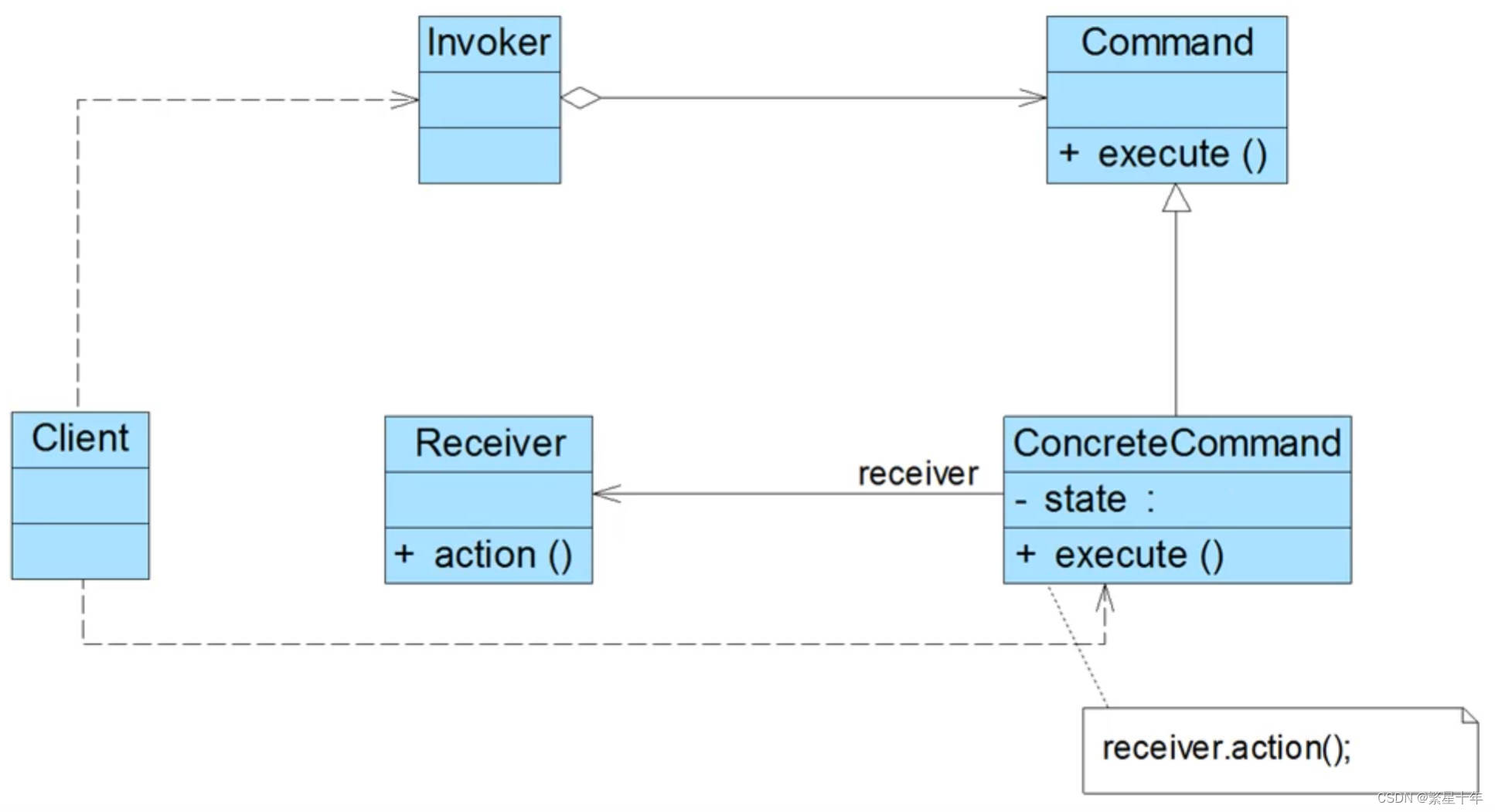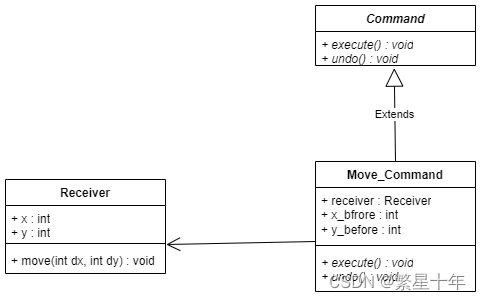文章目录
- 一、前言
- 二、分析 + 拆解
- 1、经典命令模式
- 2、撤销操作
- 3、关于`Invoker`类
- 三、实现
一、前言
哎!只要是书上写的和经典设计模式不同,我就会很伤脑筋。😩
命令模式到底是干什么的?
答:命令的发送者和接收者完全解耦
简单来说:转换了调用主体,调用主体由原来的类,变成了命令类(或者调用命令类的类)为调用主体
相关代码可以在这里,如有帮助给个star!AidenYuanDev/design_patterns_in_modern_Cpp_20
二、分析 + 拆解
1、经典命令模式

个人觉得太复杂,没有很直观的描述出命令模式的作用。
下面是我拆解的图

具体的成员变量可成员函数大家可以先不用看,现在你只要明白一个点就可以了—— Move_Command类组合了Receiver类,所以可以由 Move_Command随意调用move方法(即这就是我说的调用主体的改变)
2、撤销操作
也就是记录一下以前没执行的状态,再还原就行了。
3、关于Invoker类
Invoker类也就是命令的发送者。
举个例子:
对于游戏呢,就接收很多命令在Invoker类中,我们
用Invoker类依次发送 Command类就可以了。
三、实现
#include <iostream>
#include <iterator>
#include <memory>
#include <vector>
using namespace std;
class Receiver {
private:int x;int y;public:Receiver(int x, int y) : x(x), y(y) {}void move(int dx, int dy) {x += dx;y += dy;}void show_pos() {cout << "pos:" << endl;cout << "x -->" << x << endl;cout << "y ->>" << y << endl << endl;}int get_x() { return x; }int get_y() { return y; }
};class Command {
public:virtual void excute() = 0;virtual void undo() = 0;
};class Move_Command :public Command {
private:unique_ptr<Receiver>& receiver;int x;int y;bool flag;public:Move_Command(unique_ptr<Receiver> &receiver, int x, int y) :receiver(receiver), x(y), y(y), flag(false) {}void excute() override {receiver->move(x, y);flag = true;}void undo() override {if (flag) {flag = false;receiver->move(-x, -y);}}
};class Invoke {
private:vector<shared_ptr<Command>> commands;public:Invoke *push_command(shared_ptr<Command> command) {commands.push_back(command);return this;}void excute() {for (auto it : commands) it->excute();}void undo() {for (auto it = commands.rbegin(); it != commands.rend(); it++) (*it)->undo();}
};int main() {auto invoke = make_unique<Invoke>();auto receiver = make_unique<Receiver>(5, 6);auto command_1 = make_shared<Move_Command>(receiver, 6, 6);auto command_2 = make_shared<Move_Command>(receiver, 1, 6);auto command_3 = make_shared<Move_Command>(receiver, 6, 5);receiver->show_pos();invoke->push_command(command_1)->push_command(command_2)->push_command(command_3)->excute();receiver->show_pos();invoke->undo();receiver->show_pos();return 0;
}









)





)


市场规模逐渐扩大 高压SVG为主流产品)
